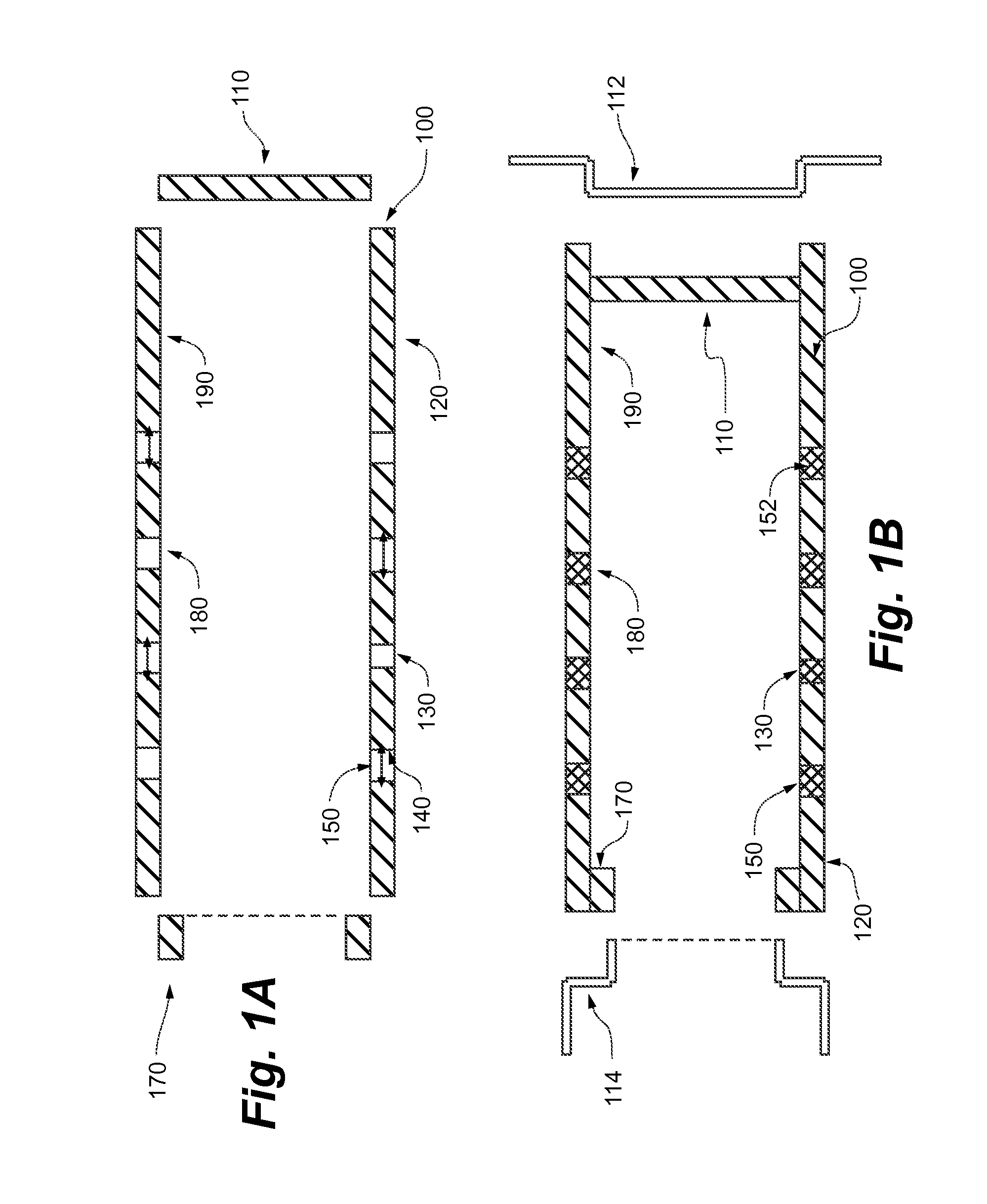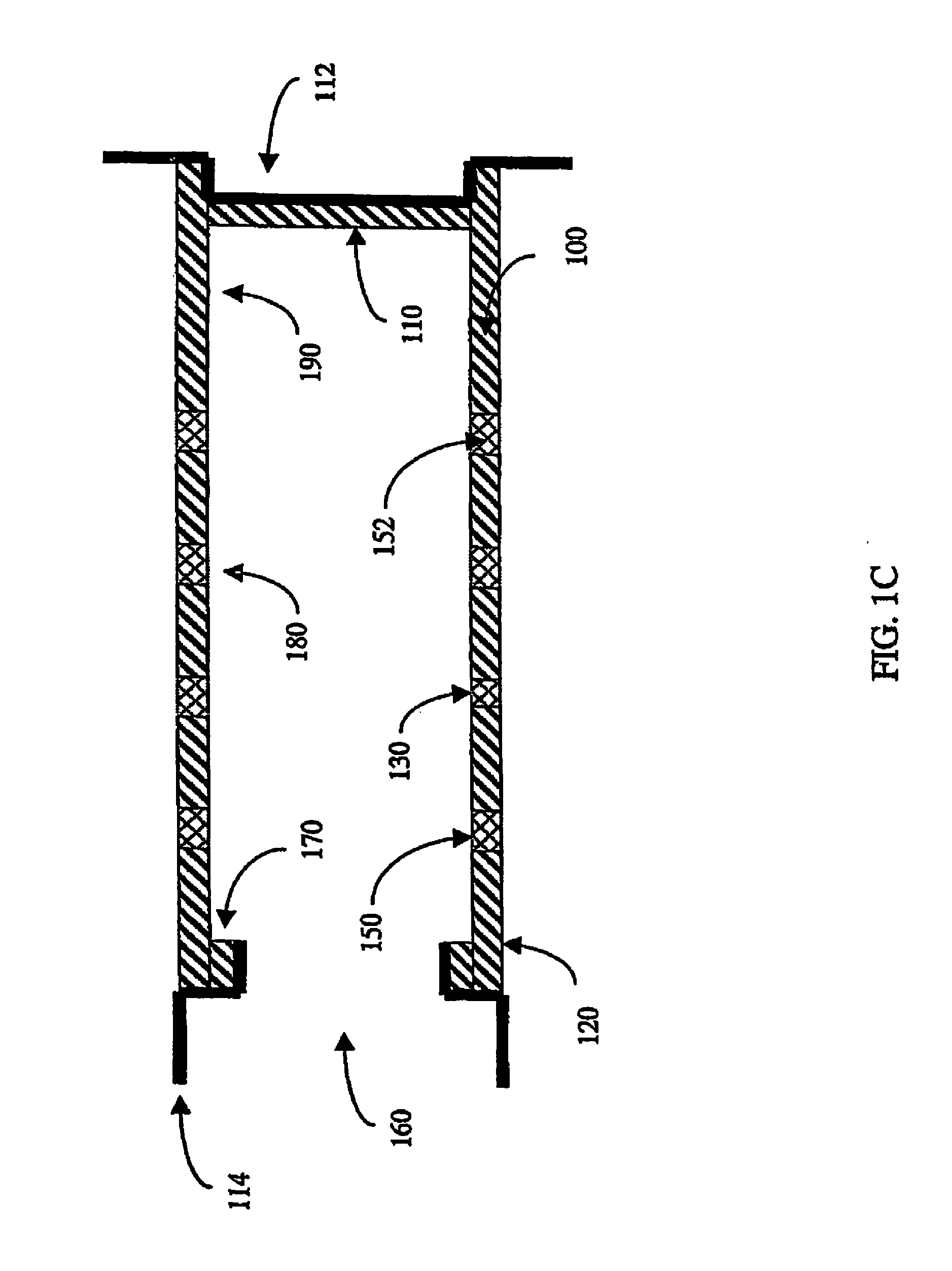Methods and materials for making a monolithic porous pad cast onto a rotatable base
a monolithic porous pad and rotatable base technology, applied in the field of methods and materials, can solve the problems of affecting the reliability and functional problems of the integrated circuit, the presence of trace metals, mobile ions on the wafer is a serious problem, and the fabrication of further interconnecting and dielectric layers becomes substantially more difficult, so as to eliminate slippage, expand, and lose concentricity
- Summary
- Abstract
- Description
- Claims
- Application Information
AI Technical Summary
Benefits of technology
Problems solved by technology
Method used
Image
Examples
example 1
[0127]A quantity of Airvol V-107 was purchased from Air Products Inc. The polyvinylalcohol was dissolved as follows: 180 g polyvinylalcohol V-107 and 600 grams of tap water. The mixture was mixed and heated to about 100. degree. C. until all the polyvinyl alcohol dissolved.
[0128]From this mixture, small test batches were made as follows: 175 grams. Polyvinylalcohol solution 30%; 48 grams formaldehyde 37%; 27 grams sulfuric acid 36%; and 13.5 grams corn starch. These ingredients were mixed in the order starch, H.sub.2SO.sub.4, formaldehyde, and last the 30% PVA solution. This new mixture was free of entrained air. The solution was of low viscosity, opaque, and at room temperature. All of this material was poured into a polyvinylchloride mold and heated to 70. degree. C. for three hours. Inspection of the sponge formed in the mold revealed excess bonding to the PVC mold surface. Some sponge material was treated with H.sub.2O.sub.2 / NaHCO.sub.3 and investigated.
[0129]The sponge was well...
example 2
[0130]Another part of this invention is a method for preparing a PVC brush mold so that the inventive cleaning brush can be removed efficiently the mold without tearing the bristles from the exterior surface of the brush. It has been found that prior to injecting a PVC brush mold with PVA, that applying a preferred mixture of tetrahydrofuran (THF) and paraffin to the PVC mold creates a coating on which PVA does not appreciably stick. Upon completion of manufacturing, using a PVC mold prepared by the method described, the brush can be easily removed from the mold by hand.
[0131]Without wishing to be bound by theory, the paraffin and THF mixture, when applied in proper proportions is believed to act upon the PVC material by forming an alloy layer comprised of some or all of the elements PVC, THF, and paraffin. This alloy layer is in the form of a visible sheen which can be physically scratched off of the mold until the pure PVC located below the alloy layer, is exposed. The alloy layer...
example 3
[0135]This prophetic example describes cleaning a wafer having a layer of copper metal following a chemical mechanical planarization process. The wafer may be introduced into a first brush box of the cleaning system. In the first brush box cleaning chemical can be applied to the wafer through the brushes which are formed of a cast on core porous pad material interlocking to the base core of the brush. The cleaning chemical applied through the brushes in the first brush box controllably transforms copper material on the substrate surface into a water soluble form. The copper material is transformed into a water soluble form in order to remove a controlled amount of copper from the surface of the wafer. The wafer can be moved from the first brush box to the second brush box. In the second brush box a second cleaning chemical may be applied to the surface of the wafer through the brushes of the second brush box in order to clean the wafer surface and clean the brushes of copper. The se...
PUM
| Property | Measurement | Unit |
|---|---|---|
| diameter | aaaaa | aaaaa |
| thickness | aaaaa | aaaaa |
| thickness | aaaaa | aaaaa |
Abstract
Description
Claims
Application Information
 Login to View More
Login to View More - R&D
- Intellectual Property
- Life Sciences
- Materials
- Tech Scout
- Unparalleled Data Quality
- Higher Quality Content
- 60% Fewer Hallucinations
Browse by: Latest US Patents, China's latest patents, Technical Efficacy Thesaurus, Application Domain, Technology Topic, Popular Technical Reports.
© 2025 PatSnap. All rights reserved.Legal|Privacy policy|Modern Slavery Act Transparency Statement|Sitemap|About US| Contact US: help@patsnap.com



